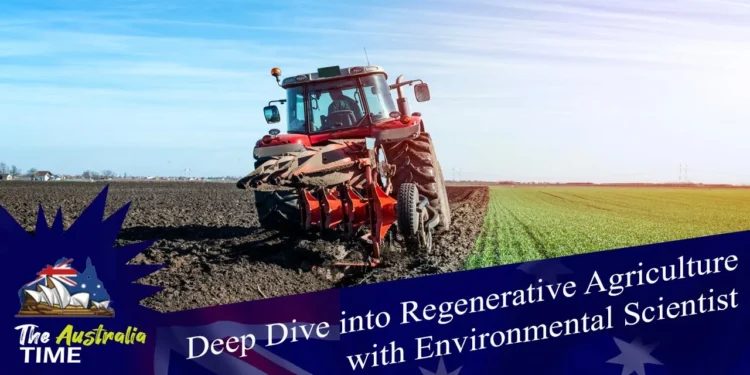Agriculture, while crucial for sustaining human life, has long been one of the major contributors to environmental degradation. From deforestation to soil erosion and water pollution, the impacts of conventional farming practices are undeniable. It is the source of one-third of all emissions and uses 70% of fresh water.

However, amidst growing concerns about sustainability and the future of our planet, a beacon of hope emerges in the form of regenerative agriculture.
Regenerative agriculture offers a promising solution to mitigate the adverse effects of conventional farming while fostering environmental restoration. At its core, it’s about working with nature rather than against it.
One of the leading voices in this movement is Khory Hancock, an environmental scientist and entrepreneur dedicated to making regenerative agriculture globally scalable at the pace required to counteract the climate shift.
What is regenerative agriculture?
“In essence, it’s a holistic approach to land management that focuses on restoring and enhancing ecosystems rather than depleting them,” Hancock explains. It encompasses a set of principles that prioritize soil health, biodiversity, water conservation, and community well-being. It aims to mimic nature, more specifically copy how native animals have grazed the countryside for millions of years.
Regenerative farmers emphasize practices like planned grazing, no-till farming, and integrated crop livestock management. This helps to build and safely store the excess carbon dioxide in the atmosphere in the forests, oceans and soils.
Hancock emphasizes the importance of revitalizing degraded farmlands. He says, “Restoring all ecosystems to full health is paramount, as our forests, oceans and soil not only supports robust crop growth and livestock health but also sequesters carbon from the atmosphere, mitigating climate change.”
By mimicking natural processes and fostering symbiotic relationships between plants, animals, and microorganisms, regenerative agriculture aims to regenerate degraded land and improve farm resilience.
One of the key insights Hancock shares is the interconnectedness of all elements within an ecosystem. He advocates for a shift from monoculture to diverse farming systems, where a diverse array of crops and livestock coexist synergistically. This not only enhances biodiversity but also reduces the risk of pests and diseases.
“Industry plays a crucial role in promoting and incentivizing regenerative agriculture practices,” Hancock highlights. By having strong policy frameworks in place that prioritize the use of carbon regeneration projects, governments can encourage farmers to adopt regenerative methods.
Moreover, investing in research and education programs can help disseminate knowledge about the benefits of regenerative agriculture and equip farmers with the necessary skills to transition to more regenerative practices.
Additionally, policies such as carbon pricing and financial markets for ecosystem services can provide additional economic incentives for farmers to embrace regenerative practices. By internalizing the true cost of environmental degradation and rewarding farmers for their role in sequestering carbon through the use of carbon credits, governments can create a scalable future for regenerative agriculture to thrive.
Regenerative agriculture offers a promising path towards a more sustainable and resilient agricultural system. By prioritizing soil health, biodiversity, and reforestation and ecosystem restoration, regenerative land managers can lead the way toward a more sustainable future for the industry and humanity.
With the right support from investors looking to offset emissions on their path to Net Zero, along with governments and other stakeholders, regenerative agriculture can become the new norm, ensuring food security, environmental stewardship, and economic prosperity for generations to come.
As a renowned entrepreneur, Khory Hancock now runs multiple regenerative carbon projects on cattle stations across Australia that aim to reforest hundreds of thousands of hectares of degraded land while accruing carbon credits that ensure profitability. Looking to expand, Hancock is inviting corporations to invest in an agricultural and carbon industry space that has low input costs with higher return through the trading of high integrity carbon credits.
To learn more about it, connect with Khory Hancock or www.climaterevive.com
Find More Latest Articles
















